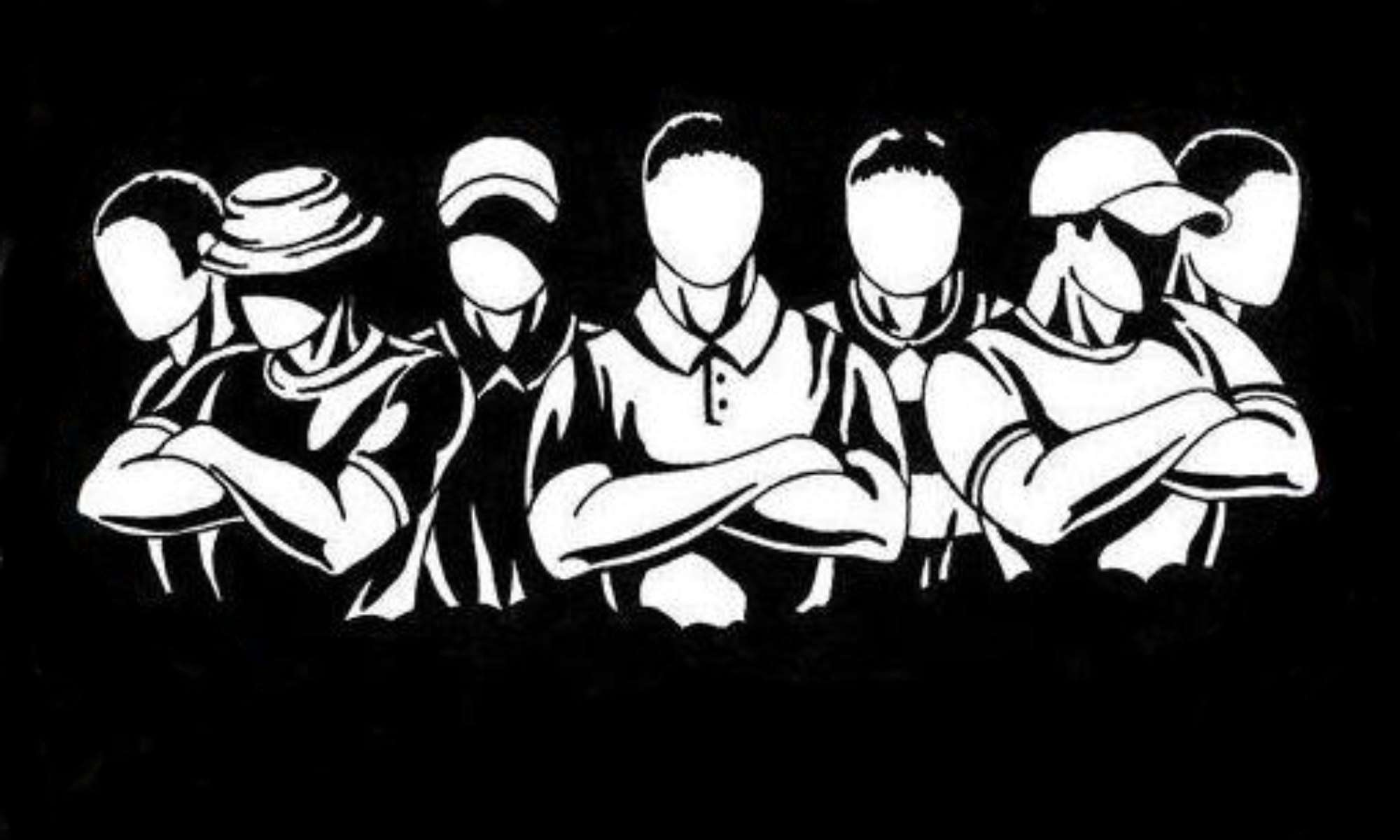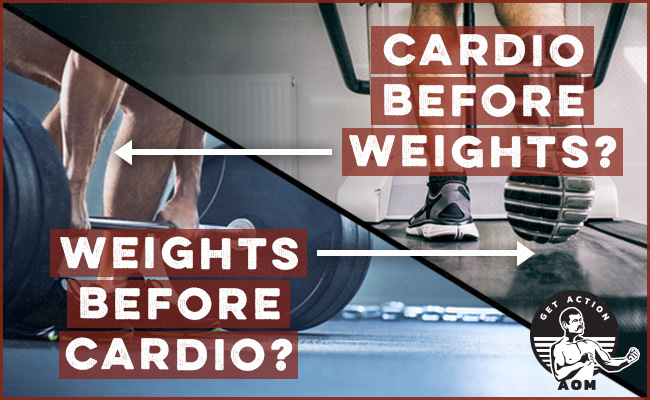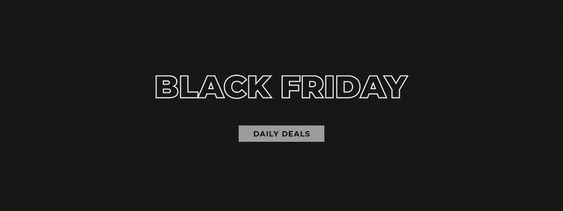How to Get Bigger Traps (GUARANTEED!!)
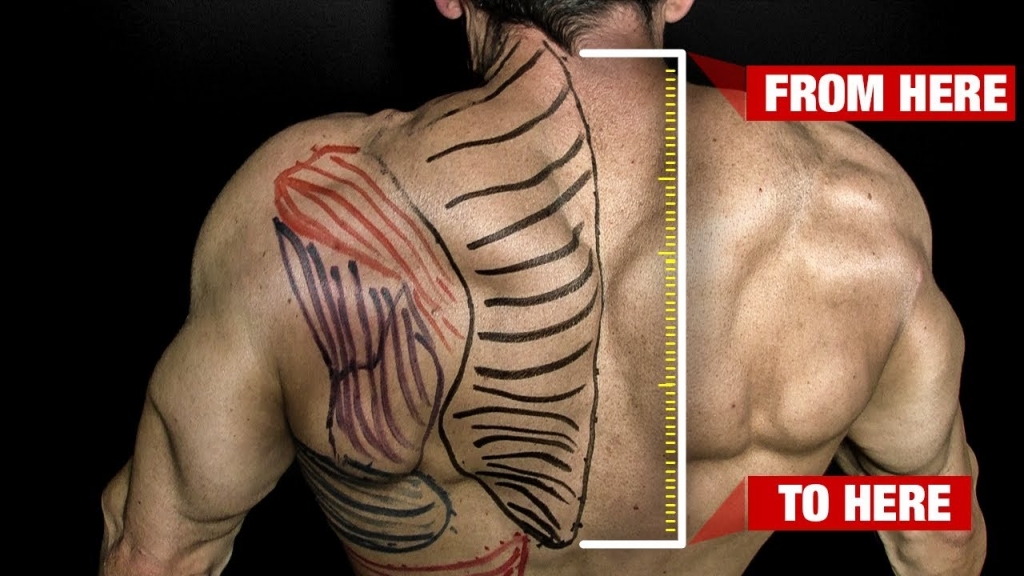
THE PROBLEM WITH TYPICAL TRAP WORKOUTS
Most people think of shrugs as the go-to exercise when it comes to training the traps.
But you have to realize that doing shrugs alone WON’T get you the most complete trapezius muscles. This single exercise is missing some very important elements of trap training.
Another common problem is that many people end up overtraining their traps and causing muscle imbalance and posture problems. This is a mistake that you definitely want to avoid!
I’m going to show you why shrugs aren’t the best exercise for the traps, help you understand how to keep from overtraining them, and give you a fast and simple way to incorporate complete trap training into your workouts.
Before we get started let me ask you a question. When you think of the traps is this what comes to mind?

Most people do, and that’s part of our problem. This is not the traps, but just the upper traps. If this is how you are thinking of the traps, you’re forgetting to train two thirds of the muscle you’re trying to grow!
The trapezius is a kite-shaped muscle which is divided into three zones (upper, middle and lower) due to the orientation of the muscle fibers along the belly of the muscle in each of these zones. Once you can see the complete picture of the traps, you realize that a straight up and down shrug is not enough to hit the entire muscle optimally.
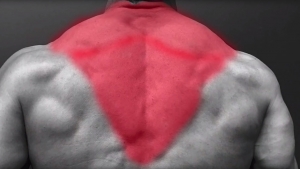
In order to have a fully developed back, more importantly, a fully functional back, you need to make sure you’re not just training the upper trap, but the middle trap and lower trap as well. When you train all 3 zones of the traps, your shoulders can work more efficiently and effectively.
Mistaking just one small part of the traps for the whole muscle is just one common mistake many people make in their trap training. Next I’m going to discuss why overtraining is a real danger for your upper traps, how to avoid it, and how to be sure you’re hitting all 3 trapezius zones. Before I do that, let’s take a quick look at the location of the upper, middle and lower traps.
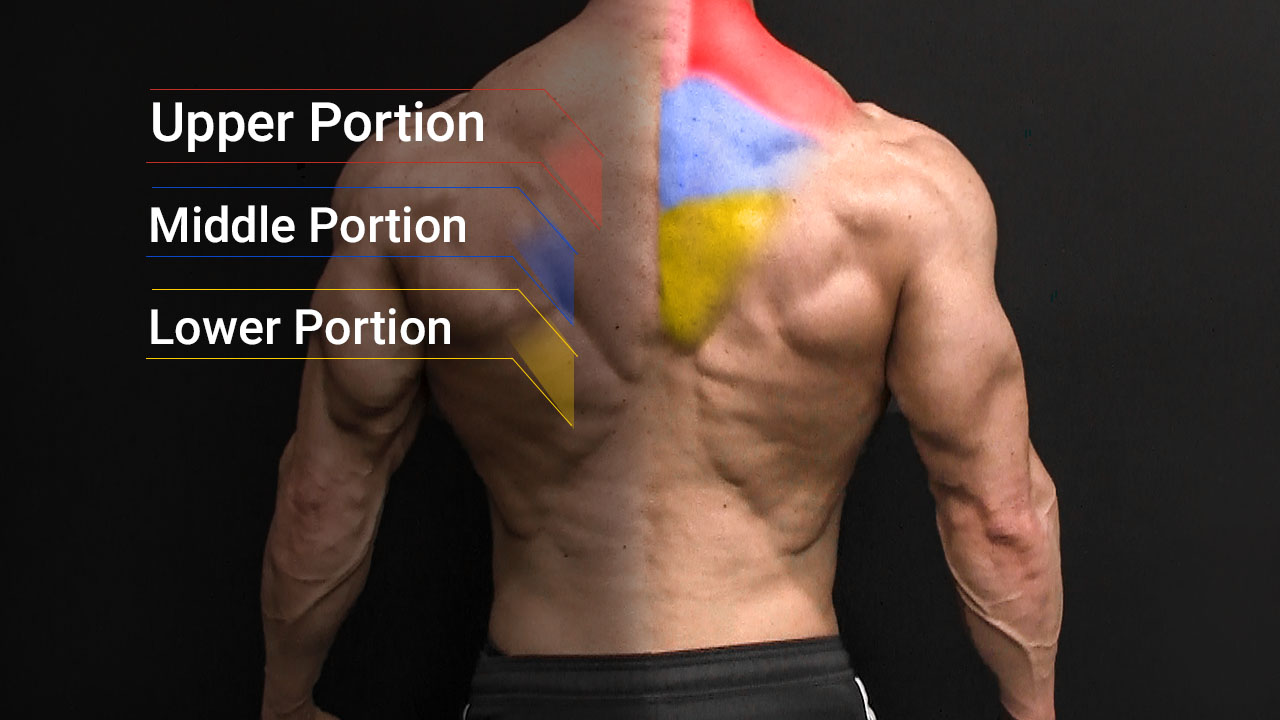
WHY THE UPPER TRAPS ARE AT RISK FOR OVERTRAINING
When it comes to training the trapezius muscle, the upper traps are what get most of the attention because it’s what stands up tall making us look like we’re larger and have a bigger neck.
However, I don’t really program a lot of direct upper trap work into our programs. There’s a good reason for this!
Performing the heavy compound lifts like the deadlift, row and carry are an incredible way to build bigger thicker upper traps without having to add in specialty exercises on top.
Below are a few examples to illustrate how these exercises definitely incorporate the traps:
A heavy deadlift is certainly going to overload the upper traps especially if you go a little wider on your grip.

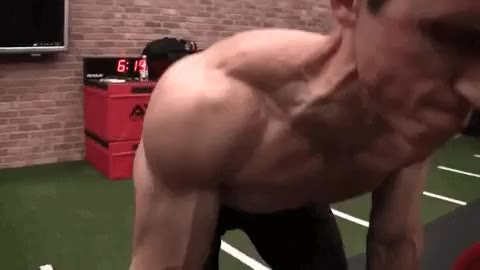
A row is another compound exercise that can definitely overload the upper traps.

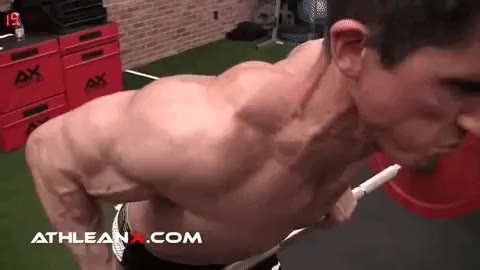
The farmer’s carry is an endurance based move that is a very effective way to load the upper traps.

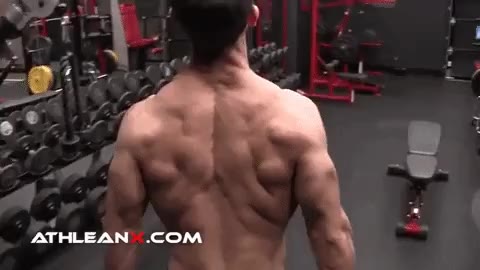
Since many of our foundational movements incorporate the upper traps, you don’t necessarily need to have a lot of upper trap work in your training program. As a matter of fact, if you do train upper traps separately you have to be careful about overtraining them if you’re also performing compound movements.
The overdevelopment of the upper portion of the traps at the expense of the middle and lower will create muscle imbalances that feed into shoulder dysfunction and faulty posture over time.
We don’t want to go down that path, so we need to make sure that we’re training the upper traps cautiously as well as incorporating movements for the middle and lower traps.
When it comes to building big traps, it starts with making sure you’re not forgetting to train two thirds of the muscle you’re trying to grow. In this video, I’m going to show you a huge trap workout mistake that many people make, and it winds up costing them the overall size and development of their trapezius muscles.
The first thing you want to do is make sure you understand what the traps muscle actually encompasses before you start training it. Because the muscle is essentially divided into three zones, due to fiber orientation changes along the belly of the muscle, you realize that a straight up and down shrug is not enough to hit the entire muscle optimally.
The traps are comprised of an upper, middle and lower portion. These are aptly named because of the orientation of the muscle fibers of the muscle belly within each of these zones. Since we always say here on this channel how important it is to follow the fibers when you are trying to optimally train a muscle, you want to be sure you have exercises and strategies in place for doing this in your traps training.
Since the upper traps are often times targeted with shrugs, most people who lift do not need to get any additional coaching on what exercises to do to hit this area. For those that do however, be sure to watch our traps workout videos here on this channel for more science based exercise options for how to do this properly. The important thing to note however, is that overdevelopment of the upper portion of the traps at the expense of the middle and lower will create muscle imbalances that feed into shoulder dysfunction and faulty posture over time.
This is something you definitely want to avoid. For this reason, many times I will not directly program exercises for the upper traps specifically into my programs. I know full well that performing the heavy compound lifts like the deadlift, row and carry are an incredible way to build bigger thicker upper traps without having to add in specialty exercises on top.
That said, you can perform these big compound moves and still be lacking development in the other two thirds of the muscle. So, when you want to effectively target the middle fibers of the traps you should really look into performing the wrap around row exercise shown here. This should be done with the elbows bent to minimize the action of the rear delt and make the scapular retraction come primarily from the middle trap fibers.
Likewise, if you don’t focus on specifically trying to target the lower traps then you are likely to have weak or undeveloped muscles in this area. The prone dumbbell press is a great exercise option for hitting this area. The key here is not to focus on the amount of weight that you are lifting. Instead, focus on the quality of each contraction. These lower trap fibers are usually very underdeveloped and need your improved mind muscle connection in order to flourish.
Keep the weights low but the tension high and you will find that your overhead pressing mechanics will improve as well as your shoulder safety as this gets stronger.
If you are short on time and want to use one exercise that you already should be doing already, then you have the option of the face pull press modification. This is an absolutely tremendous way to train your traps without having to add in many additional sets of separate exercises. Perform the face pull as you normally would and then add the additional overhead press to engage the lower traps. The act of pulling back on the cable or band alone is enough to fire up the middle and upper traps into the exercise.
For a complete step by step program that guides you through every workout with the same science applied to exercise selection as in this video, head to the link below and start training like an athlete with the ATHLEAN-X Training Systems.
For more videos on how to build bigger traps and the best traps workout for getting bigger shoulders, be sure to subscribe to our channel at the link below and turn on your notifications so you never miss a new video when it’s published.
You can experiment with different cadences and sequences to see what feels most effective to you. Some options are doing one arm at a time, holding one in contraction while I bring the other one around or both arms at the same time.
Some of you might wonder about a movement in which bring our arms out into a T at our sides. That would be a middle trap exercise but it involves a lot of rear deltoid as well, which we’re not trying to target.

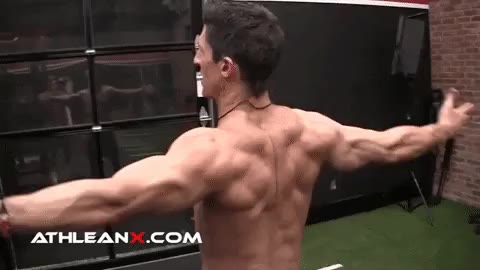
Instead, we want to keep the movement short and wrapped in tight to our body so we get more of that scapular retraction driven by the middle trap.

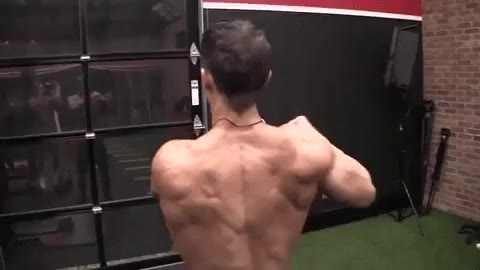
Whether you’re going to be doing classic shrugs for the upper traps or are hitting the traps when doing your compound movements, incorporate an equal number of sets of this exercise to make sure you’re hitting the middle traps.
HOW TO HIT THE LOWER TRAPS
The lower traps are incredibly important for the proper motion of the shoulder as you raise it up over your head.
If you don’t focus on specifically trying to target the lower traps, you are likely to have weak or undeveloped muscles in this area. The Prone Dumbbell Press is a great exercise option for targeting the lower trapezius.
The key here is not to focus on the amount of weight that you’re lifting, but instead focus on the quality of each contraction. These lower trap fibers are usually very underdeveloped and need your maximum mind muscle connection in order to flourish.

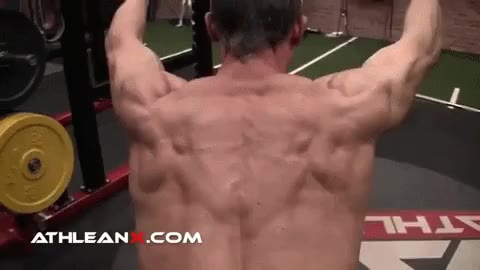
You don’t need to use a lot of weight to do this exercise. As a matter of fact, some people will find that just doing the motion alone is all they need to overload this area because it’s a chronically weak portion of the traps.
Now, I’m going to show you a really easy way to incorporate this movement into your workouts. If you’ve been watching my YouTube channel for any length of time, you already know how much I value the face pull, and you should be doing face pulls after every, single workout!


If you’re already doing your face pulls there’s a slight modification you can make to get this exercise to hit the middle trap and lower trap even more effectively. The Face Pull Press is a fantastic way to train your traps without having to add in additional sets of separate exercises.
Perform the face pull as you normally would and then add the additional overhead press to engage the lower traps. The act of pulling back on the cable or band alone is enough to fire up the middle and upper traps into the exercise.


Pull back using the same proper mechanics as you would for a face pull. Lead with the hands and not with the elbows to avoid internal rotation of the shoulder. You want to create external rotation and get the shoulder working together with the rotator cuff and the mid-scapular muscles as they prefer to do.

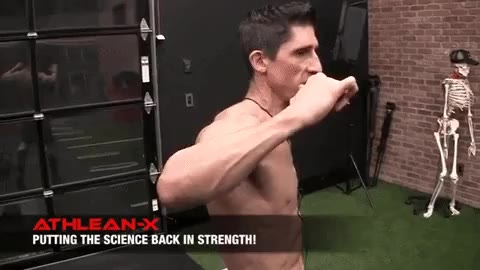
From there, we raise our arms up over our head into the press portion of this movement. The force is pulling our arms out in front of your body so you have to work hard to keep the scapula retracted. You are combining that retraction with elevation and going through the entire range of motion.
Hopefully now you have a better understanding and appreciation of the traps. From now on you’ll be drawing that whole picture of the kite in your mind, and working the upper middle and lower traps in your training!

- Most people only do shrugs when they train their traps. This is because they think the upper traps are the entire trapezius muscle, but actually they’re neglecting an entire two-thirds of this muscle!
- I don’t typically include upper trap exercises in my training programs because the upper traps are engaged and incorporated into our foundational compound movements like rows, deadlifts and farmer’s carry. In fact, doing additional upper trap specific movements could put you at risk for overtraining the upper traps, which can cause muscle imbalances and postural problems.
- Whether you perform those compound movements or do shrugs for your traps, you are still neglecting the middle and lower portion of this muscle.
- You can target the middle trap with the Wraparound Press and the lower trap with the Prone Dumbbell Press.
- If you’re already doing Face Pulls after every workout (as you should be) you can modify them into a Face Pull Press to hit upper, middle and lower traps with just one exercise!
I say it all the time… “All muscles matter!” If you’re looking for a complete step by step program that doesn’t overlook any muscle and that applies science to every exercise selection, check out our complete selection of programs at ATHLEANX.com.
Content retrieved from: https://athleanx.com/articles/how-to-get-bigger-traps-guaranteed.
Claim your uniform tax rebate today
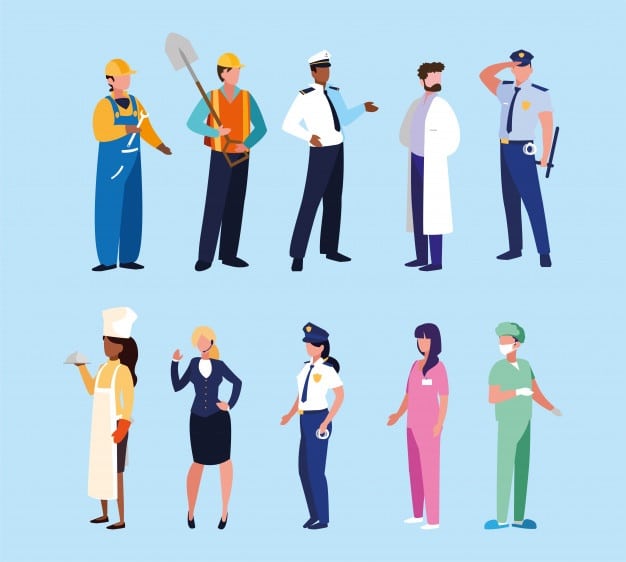
Claim Tax Refunds For Work Uniform & Protective Clothes
If you wear a uniform or protective clothing at work and you have to wash it yourself you may be due a tax refund from HMRC. If you don’t claim it, you’ll lose it. According to our statistics, 2 in 3 employees who wear a uniform at work can get a tax rebate.
Should You Lift Weights Before Doing Cardio? Or Do Cardio Before Weights?
You’re a busy man. So when you work out, you aim to get in both strength training and cardio exercise in a single session.
But should you do weights or cardio first?
To help me answer that question, I talked to my barbell coach, Matt Reynolds, owner of Barbell Logic Online Coaching.
His answer? For most people, it’s best to lift weights before doing cardio.
For why, read on.
Why You Should Lift Weights Before Doing Cardio
To get stronger, you want to lift the most weight possible during a workout. But when you do cardio before you lift weights, you prevent yourself from achieving this goal. As Matt explains, “When you do cardio before strength training, you fatigue the muscle, which causes a decrease in the contractual force your muscles are able to produce, which means you can’t lift as much.”
He continues:
This is because of the ‘all or none principle’ of muscle contraction. Muscle fibers contract at 100%, or they don’t contract at all.
So to lift something 70% of your max would require 70% of your muscle fibers to fire at 100%, rather than 100% of your muscle fibers to fire at 70%.
Because of this, if SOME of your muscle fibers are already fatigued from previous cardio, then less muscle fibers are available to contract for weight training.
Research bears this out. In a study published in the Journal of Strength and Conditioning Research, researchers found that subjects who did a bout of treadmill running before lifting weights had a decrease in muscle power and performed fewer reps compared to when they lifted before running on the treadmill. What’s more, when subjects ran before lifting, lifting just “felt” heavier. The rate of perceived effort increased.
Prioritizing weight training over cardio exercise will not only allow you to lift more lbs, but that advantage leads to another: enhanced fat loss. Matt unpacks how: “Increasing muscle mass increases your resting metabolic rate which allows you to burn more calories when you’re just sitting there existing. And if you want to increase muscle mass, you need to lift heavy weight, and lifting weights before cardio lets you lift heavier weight.”
A final added benefit for lifting weights before cardio is that it can simply save you time in the gym. “Cardio fatigues your muscles so when you finally get to lifting, you may find yourself having to take longer rests between sets to complete your reps, which may lengthen the duration of your workout,” Matt explained.
So if you’re looking to get stronger, lose body fat, and save time in the gym, lift weights before doing cardio.
But isn’t the inverse of this equation also true — that doing strength training before cardio will fatigue your body, diminishing the intensity of your cardio?
Yes, but Matt says it’s important to remember why most people do cardio: “The goal of cardio is to increase aerobic health and improve metabolic pathway conditioning. You can still get your heart pumping and your lungs sucking air even when your muscles are fatigued from weight lifting.”
As he succinctly sums it up: “Weight training doesn’t hurt cardio as much as cardio hurts weight training.”
The Exception to the Rule: If You’re Training for an Endurance Event, Do Cardio First or on Different Days Than You Lift
While Matt recommends most people lift weights before cardio, he does recommend that endurance athletes reverse that order and do cardio before lifting weights. “If you’re training for a 5K, a marathon, a mud run, etc. your primary objective is to increase performance in that event, so you want to go as hard as you can when you train. Lifting weights before endurance training will prevent you from doing that,” he explained.
Matt recommends that endurance athletes do their endurance training and weight training on different days to ensure adequate recovery between training sessions. I’ve known a number of amateur runners who have had great success, both in terms of enhancing performance and preventing injuries, in alternating strength training workouts and running workouts every other day. If that’s not possible due to time constraints, or because your running program requires you to run every day, lift weights AFTER you do your endurance training.
The Grand Tour is back!
Squid Game in Real Life…
Ridley Scott Reveals Moment Idris Elba Thought He Was Shot On Movie Set
 Alamy
Alamy
Idris Elba once thought he’d been shot on the set of American Gangster, Ridley Scott has recalled.
The hit 2007 movie starred Denzel Washington as Frank Lucas, a Harlem drug lord, and Russell Crowe as Detective Richie Roberts, who led the task force to take him down.
Elba played Tango, a dealer who faces off with Lucas in a particularly tense scene with a gun. Scott, who’s filmed a large number of grisly battle sequences and set-pieces with firearms, knows his stuff when it comes to safety – but the Luther actor still believed he’d been shot.
 Universal Pictures
Universal Pictures
Spoiler alert for American Gangster: in the scene in question, Washington’s character walks up to Tango and places a gun against his forehead. ‘What you gonna do friend? You gonna shoot me, in front of everybody?’ he says, before Lucas pulls the trigger.
In order to make it as realistic as possible, Scott instructed Elba to lean his head against the barrel so he’d physically react to the barrel.
‘What happened was, I said to Idris, ‘Listen, when he puts the gun to your head lean on the gun,’ because by the way this is a gun with a solid barrel, there is no aperture, I would never risk it – but when you pull the trigger there’s a recoil, there’s no blank, nothing,’ he told the MailOnline.
The Blade Runner director had employed the use of a plugged-up prop firearm without any blanks, in order to prevent any accidents, such as Alec Baldwin accidentally shooting and killing Halyna Hutchins on the set of Rust.
‘So I said, ‘I want you to lean on the gun.’ He pulled the trigger and it goes bang. Idris thought he’d been shot and dropped to the sidewalk and said, ‘I’ve been shot’,’ Scott said.
This effect was achieved using a UTM round, which still causes ‘blowback’ despite no blanks or danger to the actor, movie weaponry adviser Paul Biddiss told The Independent.
 Alamy
Alamy
Explaining how the round works, Biddiss said, ‘What he was referring to by a solid barrel is a completely filled in barrel that no bullet would be able to pass through, so it was a completely deactivated impractical gun as far as firing anything was concerned.
‘But he was still able to create a recoil effect for the film’s purposes by using something used in films called a UTM round, which can be put in a weapon that has had the barrel completely filled, and it still causes a blowback. It is like a small silver case with compressed air that reacts. It can be used repeatedly for a recoil effect each time. It’s quite often used in close up execution shots in films.’
If you have a story you want to tell, send it to UNILAD via [email protected
Content retrieved from: https://www.unilad.co.uk/film-and-tv/ridley-scott-reveals-moment-idris-elba-thought-he-was-shot-on-movie-set/.
The Epic Story of the Making of The Godfather
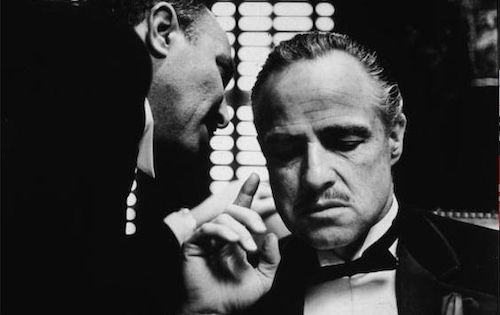
When it comes to lists of men’s favorite movies, The Godfather is a perennial inclusion. And as hard as this may be to believe, the critically acclaimed and popularly beloved film is coming up on the 50th anniversary of its release.
Journalist Mark Seal wrote an in-depth piece on the making of The Godfather for Vanity Fair magazine back in 2009, and after doing even more interviews with director Francis Ford Coppola, the actors of the film, and other behind-the-scenes players, wrote a new book on the subject called Leave the Gun, Take the Cannoli: The Epic Story of the Making of The Godfather. It’s easy to forget that the film was based on a novel by Mario Puzo, and we spend the first part of our conversation there, with Mark unpacking how an indebted gambler became a bestselling novelist. From there we turn to how Puzo’s novel was adapted for the screen — a story as dramatic and entertaining as the film itself. Mark explains why Coppola took the job of directing the film and his genius for casting. He delves into the unexpected selection of Marlon Brando to play Don Corleone, and how James Caan inhabited the role of Sonny, despite not being Italian-American. We get into how a real-life character named Joseph Colombo temporarily shut down production of the film in opposition to the stereotyping of Italian-Americans as mafia, despite the fact Colombo was a mob boss himself. Mark explains why Coppola considered making The Godfather the most miserable experience of his life and the X-factor that ultimately made the film so good. We end our conversation with whether a movie like The Godfather could be made today.
View now – https://www.artofmanliness.com/living/entertainment/the-epic-story-of-the-making-of-the-godfather/
